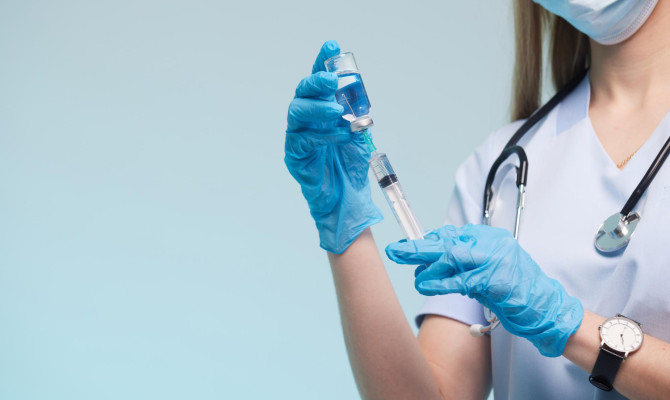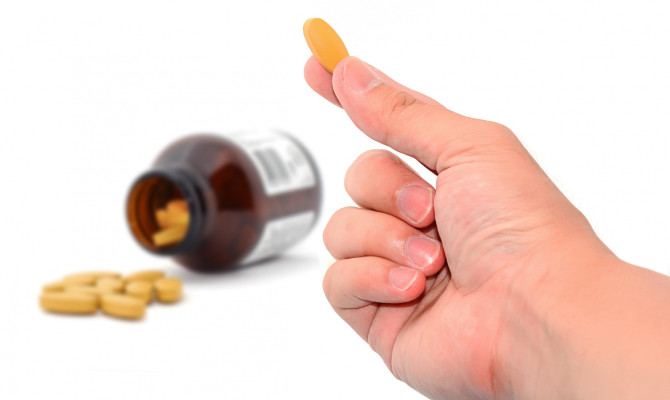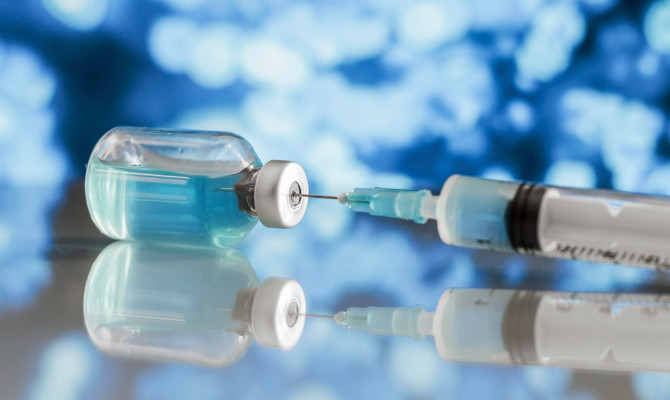Libtayo: Uses, Side effects and Precautions

- Libtayo
- 22 Aug 2023
Overview
What is Libtayo?
Libtayo is a cutting-edge immunotherapy drug that has revolutionized the way cancer is treated.
The monoclonal antibody treatment, referred to by its generic name, cemiplimab, was created by top pharmaceutical corporations. The go-ahead has been given for it to handle more serious skin cancer cases.
This article examines the science behind Libtayo and how it uses the immune system’s strength to target and combat cancer cells successfully. We will examine its applications, results, adverse effects, and interactions.
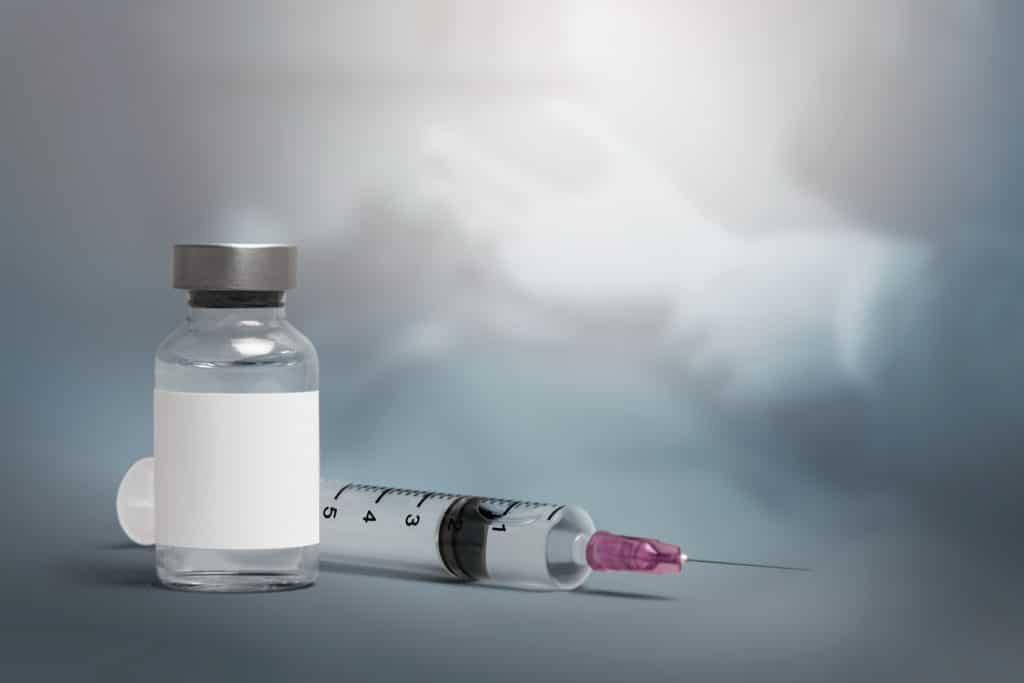
How does Libtayo work?
Protector of the immune system
- The immune system in our bodies acts as a defense mechanism to keep us healthy by fending off intruders like viruses and bacteria.
Cancer immune evasion
- The immune system may be able to detect cancer cells, but they may be able to conceal themselves from it and avoid being attacked.
- PD-1 is the particular “checkpoint” in the system that Libtayo targets. The immune system won’t be able to combat cancer cells as a result.
- Additionally, it disables PD-1, effectively turning off the system’s brakes. The immunity can now detect and wage war on the hidden cancer cells.
- This may aid in slowing the progression of cancer and, in some cases, even in tumor reduction.1Overview| Researched based study from Fda.gov ,3Overview| Researched based study from Nlm.nih.gov
Uses
Uses of Libtayo
Here are the diseases for which Libtayo is used in detail:
- Advanced cutaneous Squamous cell carcinoma (CSCC)
- Advanced basal cell carcinoma (BCC)
- Non-small cell lung cancer (NSCLC)
- Cervical cancer
Advanced cutaneous squamous cell carcinoma
- Irradiation therapy can be used to treat advanced CSCC, a kind of skin cancer that arises from squamous cells in the skin.
- It is used when cancer has spread to distant body sections or advanced locally and cannot be treated with surgery or radiation.
Advanced basal cell carcinoma
- Additionally, it is used to treat advanced BCC, a form of skin cancer that appears in the skin’s basal cells.
- It is recommended in cases where the cancer has spread to other parts of the body or is too advanced to be removed surgically or treated with radiation.
Non-small cell Lung cancer
- It is a prescription medication used in combination therapy to treat adults with non-small cell lung cancer (NSCLC).
Cervical cancer
- It has been approved for treating adult cervical cancer that has spread or returned. 1Uses| Researched based study from Fda.gov
Side effects
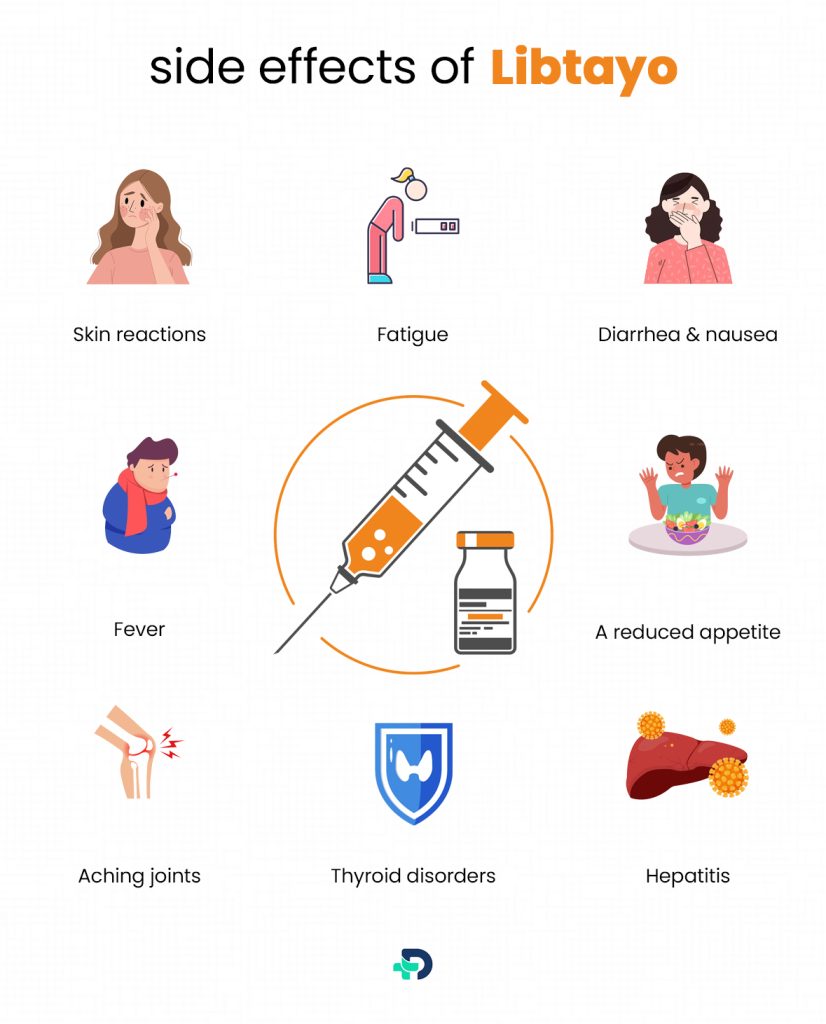
Libtayo side effects
Libtayo may have adverse effects, just like any other medicine. Before beginning therapy, being aware of these and discussing them with your doctor is crucial.
Here are a few typical examples:
- Skin reactions
- Weakness
- Diarrhea and nausea
- Fever
- Reduced appetite
- Thyroid disorders
- Joint pain
- Pneumonitis
- Hepatitis
- Injection site reactions
Skin reactions
- Rash, itching, and redness are just a few of the skin problems it might bring on. More severe skin problems like dermatitis or eczema may develop in specific cases.
Fatigue
- Being exhausted or feeling exhausted is a frequent adverse effect of treatment.
Diarrhea and nausea
- Certain patients may experience diarrhea.
Fever
- It might occur due to the immunological response the medicine causes.
A reduced appetite
- Some people may have less of a need.
Aching joints
- There could be arthralgia or joint discomfort.
Thyroid disorders
- It may impact the thyroid, resulting in hypo- or hyperthyroidism.
Pneumonitis
- Rarely, Libtayo may result in pneumonitis, an inflammation of the lungs.
Hepatitis
- Hepatitis, an inflammation of the liver, may develop in several circumstances.
Adverse effects at the injection site
- Redness, swelling, or soreness at the location of the infusion can all be side effects.1Side effects| Researched based study from Fda.gov
Dosage
Libtayo Dosage
The recommended dosage is as follows:
For advanced cutaneous squamous cell carcinoma (CSCC) and advanced basal cell carcinoma (BCC)
- It is advised to take 350 mg as an intravenous (IV) infusion over 30 minutes every three weeks until the condition progresses or the toxicity becomes intolerable.
- It is crucial to remember that dosages and treatment plans can change depending on the type of cancer, the stage, unique patient variables, and recent discoveries in research. 1Dosage| Researched based study from Fda.gov ,2Dosage| Researched based study from Libtayohcp.com
How is Libtayo used?
Prepared in a medical facility or clinic. Before the infusion, the correct dosage is chosen based on the patient’s body weight and the type of cancer being treated.
Intravenous infusion
- It is administered by a needle placed in a vein. The IV infusion is typically given in a controlled environment, like an infusion center, where the patient may be watched throughout the procedure.
Duration
- Usually, the inclusion procedure takes 30 minutes to complete.
Frequency
- The treatment strategy determines how often an infusion is administered.
Monitoring
- Vital signs and general health of the patient are closely observed. To look for any possible reactions or adverse effects, this is done.
Surveillance following administration
- Patients may be watched briefly after the infusion to ensure no immediate side effects.
A follow-up
- Patients frequently schedule routine follow-up appointments to gauge their response to treatment2Dosage| Researched based study from Libtayohcp.com
Precautions
Precautions and Warnings
As with any medication, Libtayo has some warnings and precautions that patients and healthcare professionals should know.
It’s crucial to talk about these factors before beginning treatment.
Immune-related side effects
- It strengthens the immune system, which can adversely affect the immune system. Adverse immune-mediated reactions may include organ-specific inflammation. The patient should be checked for such reactions using science, and quick medical intervention should be performed.
- During or after the infusion, some patients may experience infusion-related symptoms.
Thyroid disease
- It may have an impact on the thyroid. It can cause immune mediated thyroid disorders including thyroiditis. As a result, routine function testing is possible.
Renal dysfunction and immune-mediated nephritis
- Immune mediated nephritis has occurred in patients receiving libtayo, leading to adverse reactions.
Liver issues
- There have been a few isolated reports of hepatitis. Consider running a liver function test to look for any possible issues with the liver.
Pneumonitis with an immune element
- Immune-mediated pneumonitis may result from it. The incidence is higher in people who have received prior thoracic radiation.
Pregnancy and breastfeeding
- It is not advised to use it when pregnant because it may harm a developing fetus, called as embryo fetal toxicity. It is recommended that pregnant women use reliable contraception while receiving therapy.
- Patients should let their doctor know if they are pregnant or plan to get pregnant. Although there is little information about lactating mothers, it is best to minimize any adverse effects.
Pre-existing conditions
- Patients receiving therapy for a specific medical problem, such as an autoimmune ailment, should ask questions.
- The safety and efficacy of Libtayo in children have not been demonstrated.1Precautions| Researched based study from Fda.gov
Drug interactions
Libtayo Drug interactions
Immune suppressive medications
- Drugs that lower immune function could interfere with the medication’s effectiveness since they work against its immunity-boosting effects.
Other cancer therapies
- Combination therapy may have additive or synergistic effects with different cancer treatments, but it also has a higher risk of adverse reactions. As a result, it is essential to think carefully and keep an eye on the concurrent use of other medicines1Drug interactions| Researched based study from Fda.gov
Any feedback on this article?
 This Articles content was accurate
This Articles content was accurate Very Informative Article
Very Informative Article I have a question or a comment
I have a question or a comment
 This article contains inaccurate content
This article contains inaccurate content This article was not helpful
This article was not helpful I have a question or a comment
I have a question or a comment
We appreciate your helpful feedback!
Checkout our social pages
References
-
FOOD AND DRUG ADMINISTRATION
LIBTAYO® | Uses | Dosage | Precautions | Side effects
-
Regeneron Pharmaceuticals
LIBTAYO-DOSING | Dosage
-
National Library of Medicine
Cemiplimab in locally advanced cutaneous squamous cell carcinoma: results from an open-label, phase 2, single-arm trial | Overview












